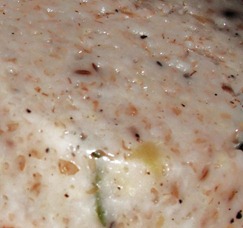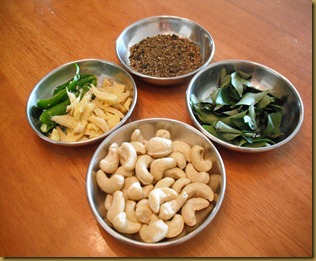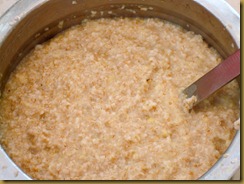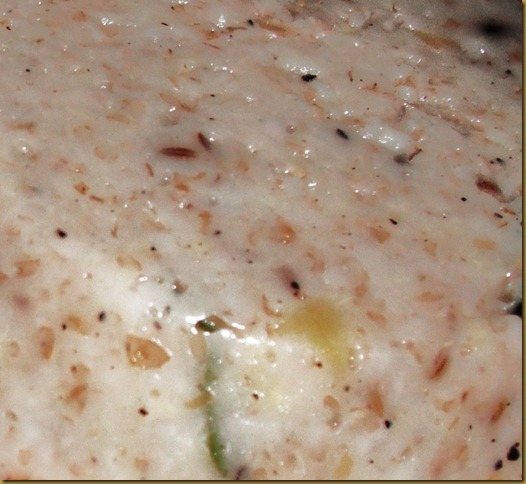An easy-to-cook, hearty dish just right for this season! It is also loaded with all nutrients you can wish for in a power-packed meal. Once you have read through the nutri notes, I’m quite certain that everyone will try this dish out. Do let me know how it worked for you.If you have sprouts ready at hand, this delicious kurma takes no time in travelling from the pot to the tummy!

You need
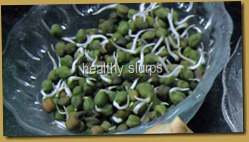
- Green chana sprouted – 1 cup heaped
- Salt – 1 tsp heaped
- Turmeric powder – 1/2 tsp
- Fresh coriander leaves – 1/4 cup chopped
- Jaggery –1 tbsp powdered (optional)
- Sambar powder – 1 tsp (optional)
- Vegetable oil – 1 tbsp
- Mustard seeds – 1 tsp
- Curry leaves – 10 leaves torn up
- Hing powder – 1/2 tsp (if you are not using onion or garlic)
- Ripe tomatoes – 4 medium, or 3 big
- Chutney dal – 2 tbsp levelled
- Fresh coconut – grated 1/4 cup
- Ginger – chopped fine 2 tbsp
- Green chillies – 2-3
- Garlic – 1-2 cloves (optional)
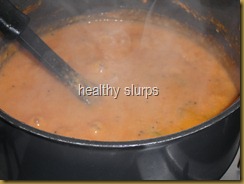
- Pressure cook chana sprouts until well cooked. Sprouting renders the legumes softer and you can cook it faster.
- Grind all ingredients mentioned under gravy to a smooth paste.
- In a thick bottomed pan, heat oil, add ingredients for seasoning in order.
- Pour in the gravy paste, add 1 – 2 cups of water, add salt and turmeric powder, bring to a boil.
- Once the gravy starts boiling, reduce flame, stir well and simmer for 10 minutes, keep stirring in between to avoid burning.
- When gravy is ready, tip in the cooked sprouts, check for salt.
- Add jaggery and sambar powder, if using.
- Adjust salt and consistency if needed by adding water.
- Garnish with fresh chopped coriander and serve hot with rotis, rava idli or steamed rice.
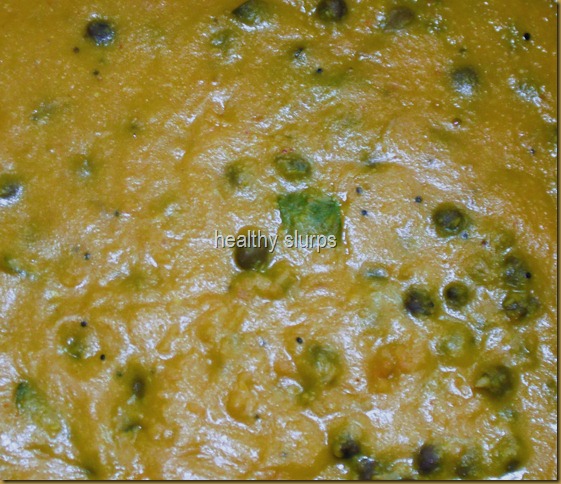
Nutri notes-
- The key ingredients in this dish are sprouts and ginger. So, I shall confine the nutrition information to these two.
- Sprouting or germinating whole pulses has been known to man for several thousands of years.
- Sprouts have the starches pre-digested by the enzyme amylase activated during sprouting. This breaks down starches into simpler sugars, proteins into amino acids and complex fats into simpler fatty acids, by the action of enzyme lipase.
- Sprouts of legumes therefore are easier to digest than the dry forms, their flatulence (gas) producing factors decrease and the protein in the legume is available to the body in a more absorbable form.
- Sprouting decreases levels of trypsin (amino acid) inhibitors or protease (digestive enzyme) inhibitors (present in the legumes - these substances make the legume harder to digest)
- Sprouting increases the availability of water soluble vitamins such as Vitamin B and C by 400% to 800%.Hence it is ideal for growing teens, pregnant and lactating women, and elderly people –all groups of people whose needs for vitamins are higher.
- Sprouting increases presence of calcium and phosphorous making it important for women past age of 35 years too.Moreover sprouts contain plant oestrogens, very essential for women in peri-menopause or pre- menopause or menopause stages. In other words – from ages 35-60 and even beyond! These plant oestrogens help maintain bone density, hence help prevent osteoporosis.The hormone also helps to relieve symptoms of PMS, hot flushes during menopause.
- Sprouting helps to increase presence of anti oxidants in foods – this prevents free radical formation.Result – skin ages slower, tissues remain stronger through age, hence better vision, hearing, better muscles and stronger bones too!
- Sprouting increases iron and zinc content of legumes. Both minerals are vital during growth phase of children.
- Sprouts being ‘live’ food are considered full of ‘prana’ or life-force.Hence, better immunity, anti ageing properties, detoxifying in nature, maintains acid – alkaline balance of the body.
- Ayurveda recommends using of ginger and turmeric in dishes of legumes to maintain acid balance and improve digestability of the dish – this recipe thus has it all !

